Search Results
Filters
Advanced Search
2154 Results
-
Accelerating DFT Sign-Off with Questa One
Resource (Paper (.PDF)) - May 13, 2025 by Jake Wiltgen
The rapid pace of technological advancement has created an unprecedented demand for highly reliable systems across a wide range of industries. In sectors such as safety critical systems, high-performance computing, and 3DIC, the need for utmost reliability is essential.
-
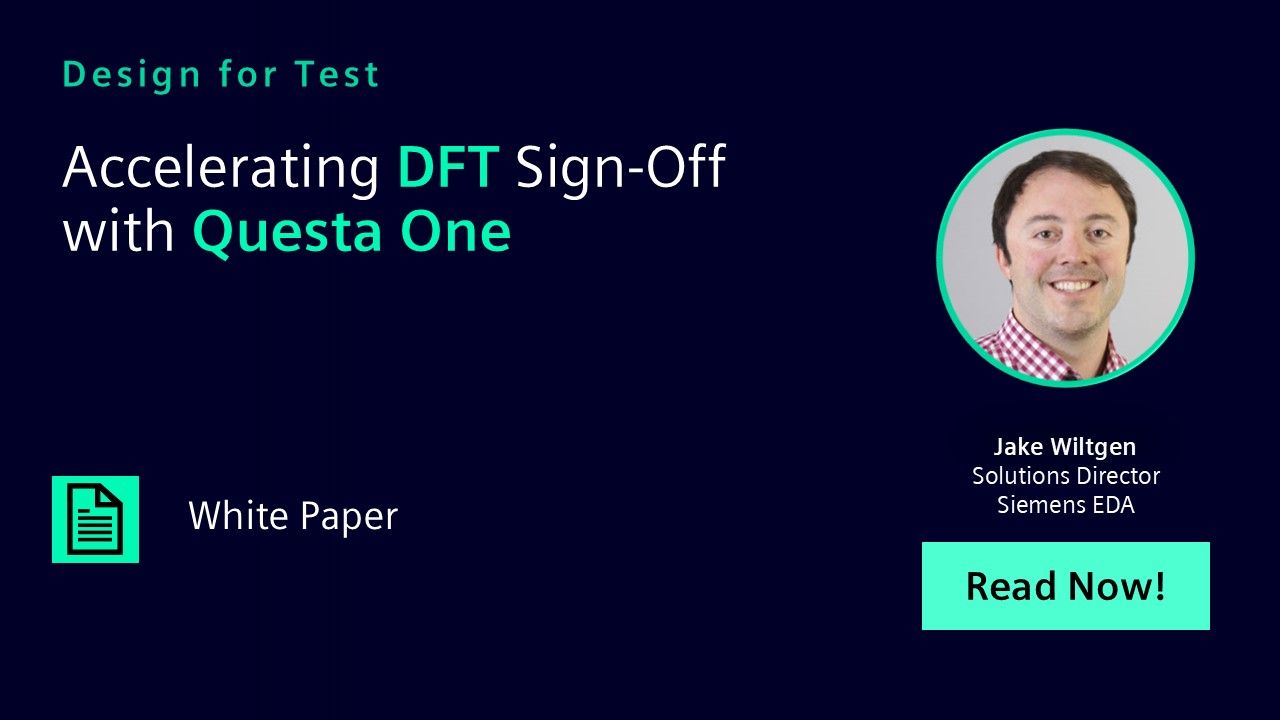
Accelerating DFT Sign-Off with Questa One
Paper - May 13, 2025 by Jake Wiltgen
By leveraging advanced EDA technologies, companies can ensure that their products meet strict reliability requirements. DFT-aware static analysis, formal analysis, logic simulation, fault simulation, verification IP, and advanced debuggers equip teams to address verification challenges across technology scaling, design scaling, and system scaling. The Questa One DFT Verification solution delivers faster DFT sign-off and reduced time-to-market.
-
Design for Test Verification
Solution - May 13, 2025 by
As semiconductor devices become increasingly complex and diverse, spanning automotive, AI/ML, 5G, and heterogeneous 3D-IC designs, Design-for-Test (DFT) verification plays a crucial role in ensuring not only high-test quality but also seamless integration with system-level requirements. While test insertion flows such as scan insertion, BIST/MBIST integration, and boundary scan logic have matured to deliver cost-effective, scalable test solutions, DFT verification remains a bottleneck that demands significant attention.
-
Functional Safety
Solution - May 13, 2025 by
The goal of functional safety is to systematically identify, analyze, and mitigate risks associated with random hardware faults and systematic design errors. This requires a disciplined approach that encompasses detailed failure mode analysis, fault injection campaigns, robustness testing, and the implementation of dedicated safety mechanisms to detect and control faults during operation.
-

Functional Safety for ISO 26262
Product - May 13, 2025 by Jake Wiltgen
As electronics become more integrated into daily life, especially in automotive applications, the demand for safer devices has grown. Modern vehicles feature advanced safety systems like lane keep assistance, blind spot detection, and forward collision warnings, with many aiming for Level 3 and 4 autonomy.
-

Functional Safety for DO-254
Product - May 13, 2025 by Jake Wiltgen
DO-254 (Design Assurance Guidance for Airborne Electronic Hardware) is the industry standard for ensuring the safety, reliability, and compliance of airborne electronic hardware. DO-254 defines stringent design assurance requirements for FPGAs and ASICs used in airborne systems. Compliance ensures that these programmable and custom devices meet safety, reliability, and regulatory standards.
-
Unified Coverage
Solution - May 13, 2025 by
In today's rapidly evolving semiconductor industry, verification teams face unprecedented challenges that traditional approaches can no longer address effectively.
-
Enhancing Defect Coverage in Design for Testability (DFT) with Functional Fault Grading
Resource (Slides (.PDF)) - May 07, 2025 by Ann Keffer
This webinar will offer valuable insights into leveraging functional fault grading for robust and reliable system designs.
-
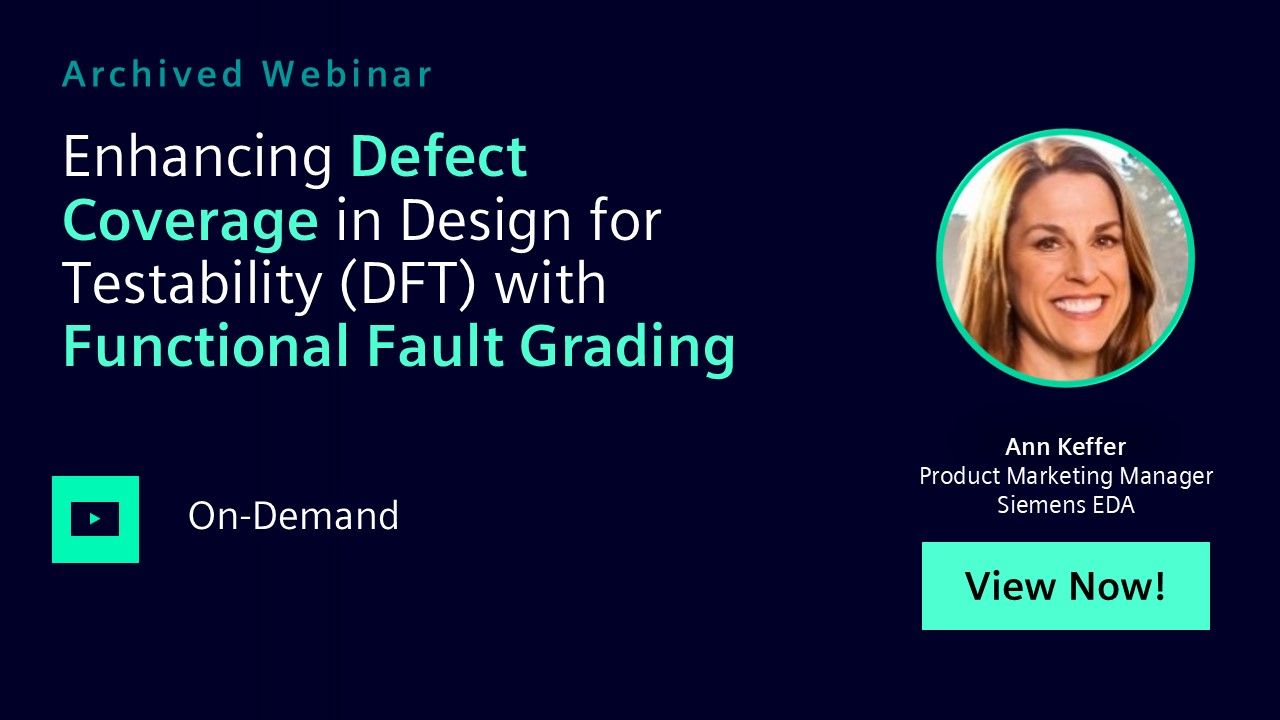
Enhancing Defect Coverage in Design for Testability (DFT) with Functional Fault Grading
Webinar - May 07, 2025 by Ann Keffer
In this webinar, you will learn how functional fault grading enhances defect coverage and the key advantages of integrating functional fault grading into DFT processes, specifically addressing faults untestable by scan tests.
-
Our Journey in Deploying Formal Register Checks with Questa Check Register
Resource (Slides (.PDF)) - May 01, 2025 by Thomas Thatcher - Rambus
-
Our Journey in Deploying Formal Register Checks with Questa Check Register
Resource (Recording) - May 01, 2025 by Thomas Thatcher - Rambus
-
Automated Trust and Assurance for ASIC and FPGA Designs: Mitigating Security Risks with Formal Verification
Resource (Recording) - May 01, 2025 by Mitchell Poplingher
In this presentation, we will introduce Questa Verify Trust and discuss some experiences and initial results from two projects at Lockheed Martin. An objective is to verify the incoming IPs for Trust, as incoming 3rd party RTL IPs may introduce security-relevant weaknesses and vulnerabilities. Another project must complete Trust Verification as a critical step of the Defense Microelectronics Activity (DMEA) trusted flow.
-
Automated Trust and Assurance for ASIC and FPGA Designs: Mitigating Security Risks with Formal Verification
Resource (Slides (.PDF)) - May 01, 2025 by Mitchell Poplingher
In this presentation, we will introduce Questa Verify Trust and discuss some experiences and initial results from two projects at Lockheed Martin. An objective is to verify the incoming IPs for Trust, as incoming 3rd party RTL IPs may introduce security-relevant weaknesses and vulnerabilities. Another project must complete Trust Verification as a critical step of the Defense Microelectronics Activity (DMEA) trusted flow.
-
Tackling Formal Verification of Large Designs using a Modular Approach
Resource (Slides (.PDF)) - May 01, 2025 by Ratish Punnoose - Sandia National Laboratories
Performing formal verification of an SoC type design in one go is limited by the tractability of the formal checks as well as by the complexity of writing an assertion that captures the full behavior. We describe approaches to perform verification in a modular way while maintaining assume-guarantee reasoning between the verification units.
-
Tackling Formal Verification of Large Designs using a Modular Approach
Resource (Recording) - May 01, 2025 by Ratish Punnoose - Sandia National Laboratories
Performing formal verification of an SoC type design in one go is limited by the tractability of the formal checks as well as by the complexity of writing an assertion that captures the full behavior. We describe approaches to perform verification in a modular way while maintaining assume-guarantee reasoning between the verification units.
-
SLEC System Flow: Leveraging Formal in Math Primitive Verification Closure
Resource (Slides (.PDF)) - May 01, 2025 by Abhiram Dronavalli - Microsoft
This presentation shows how Microsoft leveraged SLEC System strategies used for convergence.
-
Rapid Retargeting of Formal Connectivity Verification of AI FPGA Systems
Resource (Slides (.PDF)) - May 01, 2025 by Benjamin Ting, Linh Nguyen - Microsoft
This presentation describes the development and implementation of a formal-based application flow to successfully address the unique challenges encountered in dynamically retargeting connectivity verification to multiple variants of large-scale, complex FPGA-based, AI-centric cloud hardware designs.
-
Rapid Retargeting of Formal Connectivity Verification of AI FPGA Systems
Resource (Recording) - May 01, 2025 by Benjamin Ting, Linh Nguyen - Microsoft
This presentation describes the development and implementation of a formal-based application flow to successfully address the unique challenges encountered in dynamically retargeting connectivity verification to multiple variants of large-scale, complex FPGA-based, AI-centric cloud hardware designs.
-
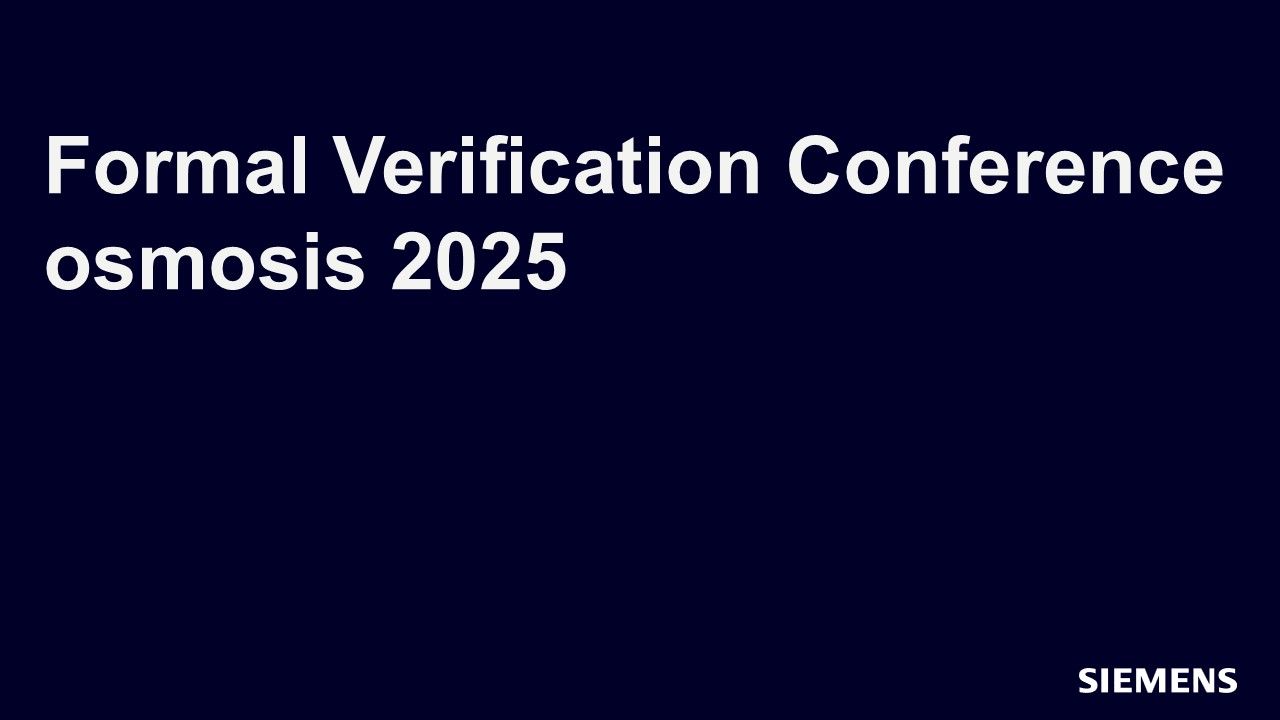
osmosis 2025
Conference - May 01, 2025 by Nicolae Tusinschi
The annual osmosis event is a dynamic platform for exchanging successes achieved through applying formal techniques to overcome verification challenges. It offers a unique opportunity to connect and engage with our accomplished research and development (R&D) experts and participants. The conversations that follow may help you and others improve formal-based verification solutions.
-
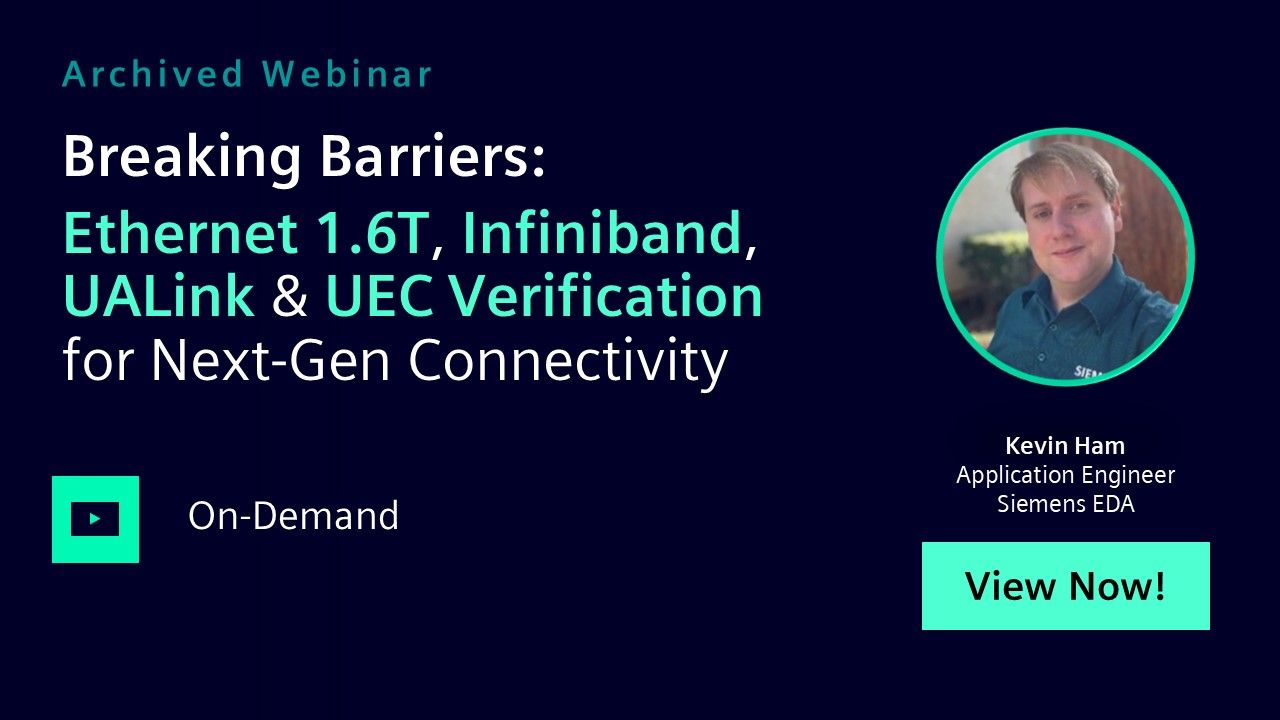
Breaking Barriers: Ethernet 1.6T, Infiniband, UALink, and UEC Verification for Next-Gen Connectivity
Webinar - Apr 30, 2025 by Kevin Ham
This session introduces Avery Verification IP for Ethernet 1.6T, Infiniband, UALink, and UEC, providing essential tools to verify complex designs for next-generation connectivity. You will gain insights into the key challenges and innovations in Ethernet 1.6T, the latest high-speed Ethernet standard, and learn how Avery's Verification IP accelerates design validation with comprehensive protocol coverage, scalability, and advanced debugging capabilities.
-
Breaking Barriers: Ethernet 1.6T, UALink, and UEC Verification for Next-Gen Connectivity
Resource (Slides (.PDF)) - Apr 30, 2025 by Kevin Ham
This session introduces Avery Verification IP for Ethernet 1.6T, Infiniband, UALink, and UEC, providing essential tools to verify complex designs for next-generation connectivity.
-
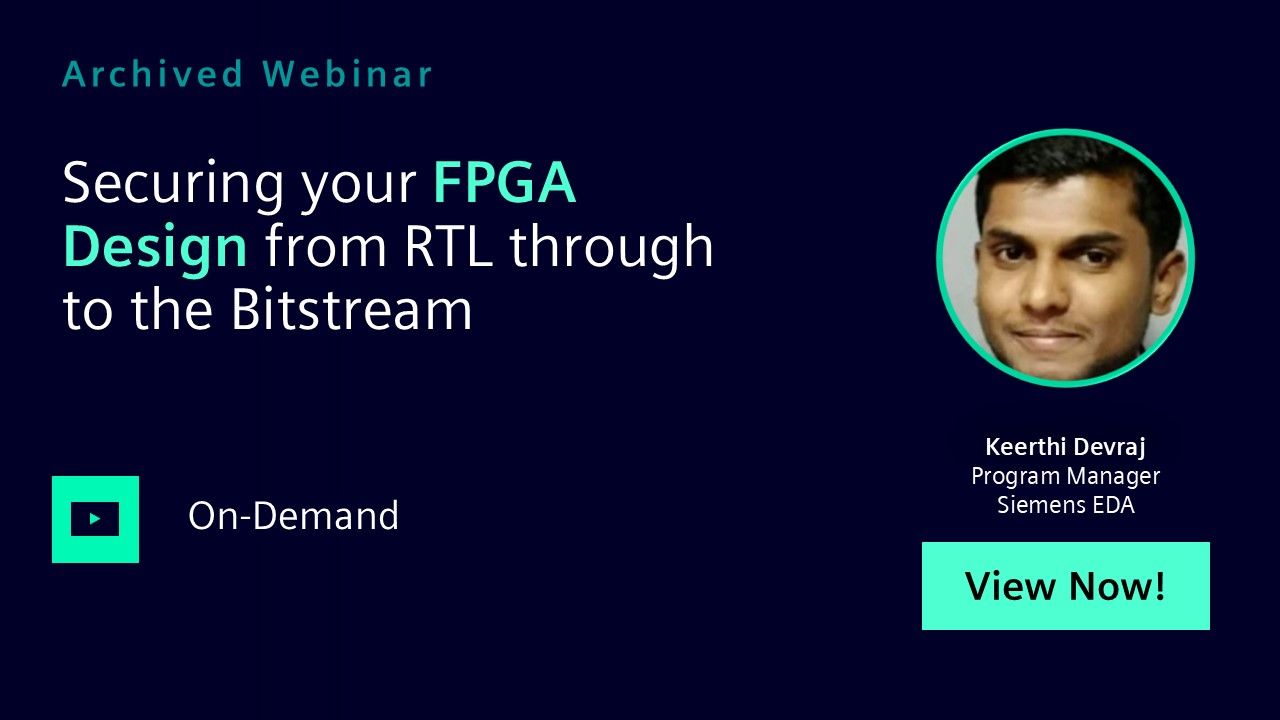
Securing your FPGA Design from RTL through to the Bitstream
Webinar - Apr 23, 2025 by Keerthi Devraj
This session will briefly introduce practical tools such as the Siemens Analyze Architecture and VerifySecure technologies, highlighting how they support the overall security strategy. In addition, we will introduce Bitwise (powered by Red Balloon Security) as a point-and-click assurance tool that delivers rapid security analysis and hardening of FPGA bitstreams.
-
Securing your FPGA Design from RTL through to the Bitstream
Resource (Slides (.PDF)) - Apr 23, 2025 by Keerthi Devraj
This session will briefly introduce practical tools such as the Siemens Analyze Architecture and VerifySecure technologies, highlighting how they support the overall security strategy.
-
Closing the Gap in Software Skills for Verification Engineers
Resource (Verification Horizons Blog) - Apr 17, 2025 by Dave Rich
I’m excited to announce next month’s U2U (User-to-User) meeting , followed by a crucial technical training session that no hardware verification engineer should miss.
-
Faster Debug Using QuestaSim Interactive Coverage Analysis
Resource (Slides (.PDF)) - Apr 16, 2025 by Justin Royse
In this webinar, you will learn how interactive coverage analysis brings another dimension to RTL and SV/UMV debugging which can lead to significant productivity boost and faster design and testbench bring up.